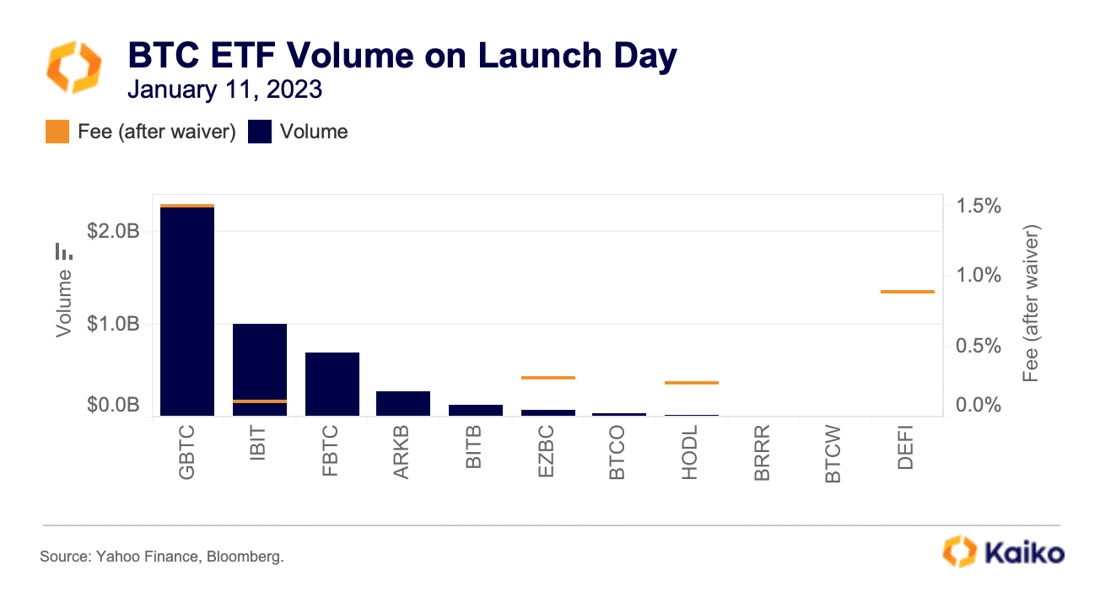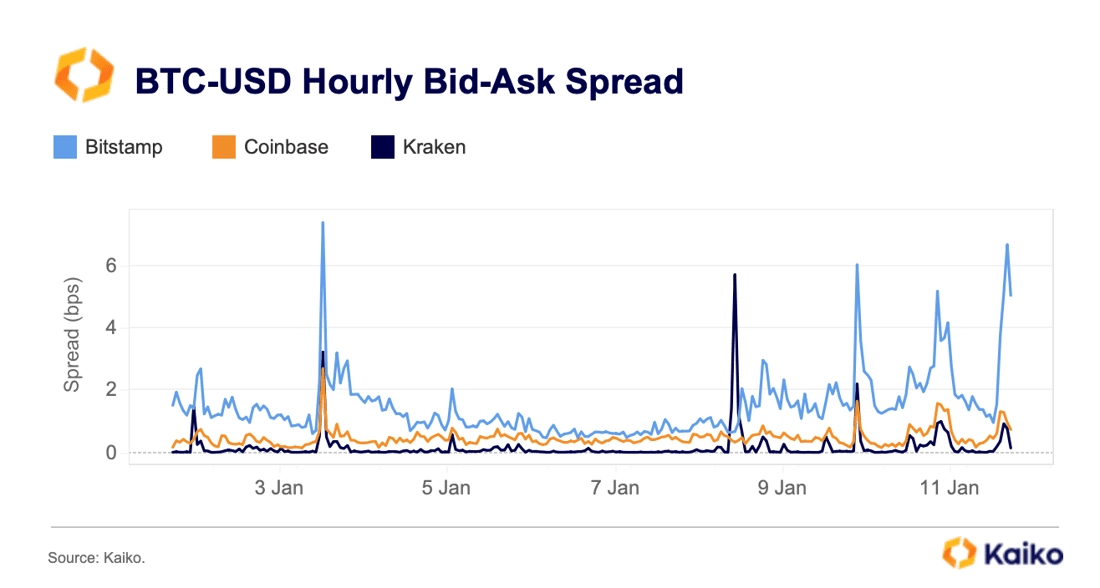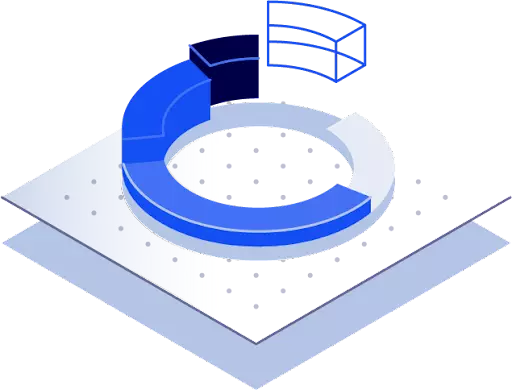Data Points
Unveiling our Q4 crypto asset liquidity ranking.
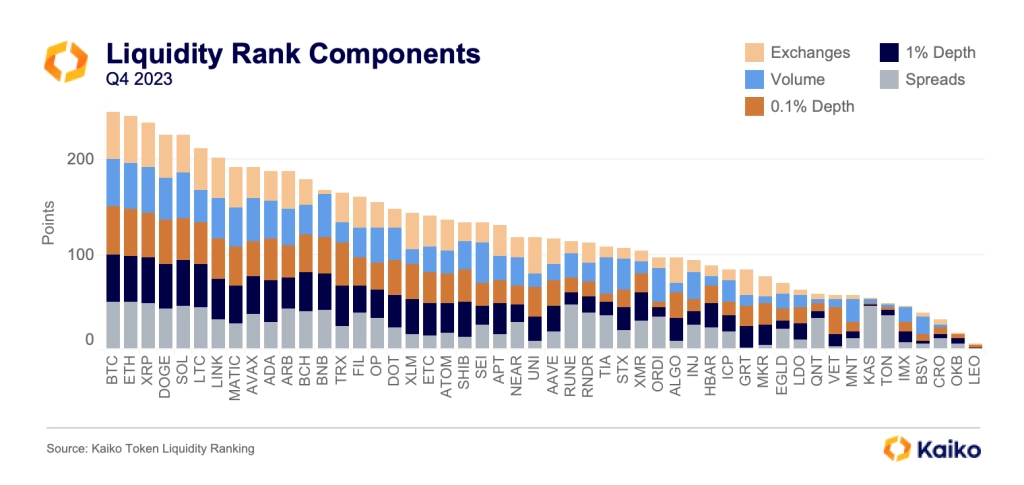
Following a dreary Q3, Q4 was a relative explosion of activity which brought some big changes to our liquidity ranking. We are pleased to have expanded the ranking to the top 50 tokens by market cap. The top four tokens in our ranking – BTC, ETH, XRP, and DOGE – have remained unchanged. The first change comes in the five spot, with SOL jumping ahead of LTC.
After that, the ranking becomes more chaotic: LINK is up 6 places to the 7 spot, MATIC 4 places to the 8, and AVAX up a whopping 14 to the 9 spot. We now host our ranking on a dedicated webpage, and you can view the detailed report below:
Download Report
USDC market share on CEXs doubles.
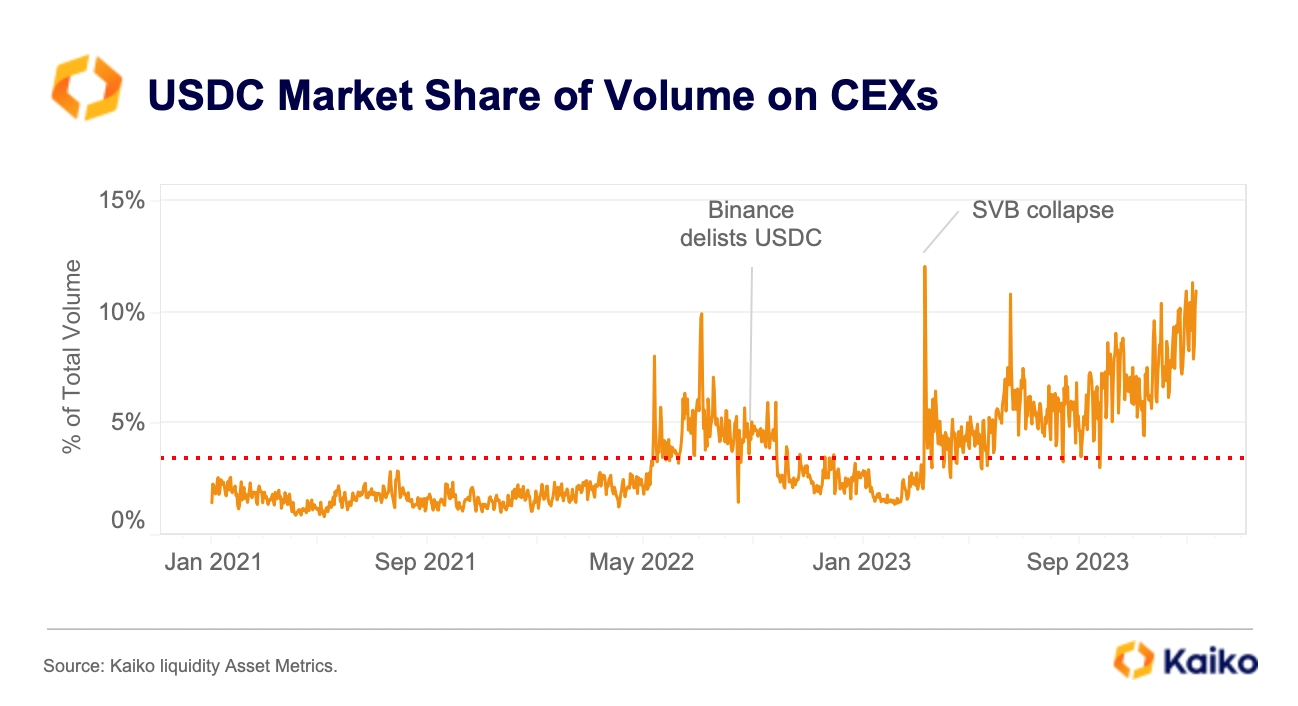
Last week, USDC’s issuer, Circle, filed for an initial public offering (IPO) with the SEC after a previous failed attempt. Even though USDC faced headwinds last year after one of its banking partners Silicon Valley Bank collapsed, its market share on CEXs has doubled over the past year, hitting its highest level since 2021 last week.
Bybit, which launched zero-fee trading for USDC trading pairs in February, has emerged as the largest USDC market, helping boost the stablecoin’s global usage. Binance, which re-listed USDC after the crackdown on BUSD, has failed to recover its dominant market share and is currently the second largest USDC market, with 37% share.
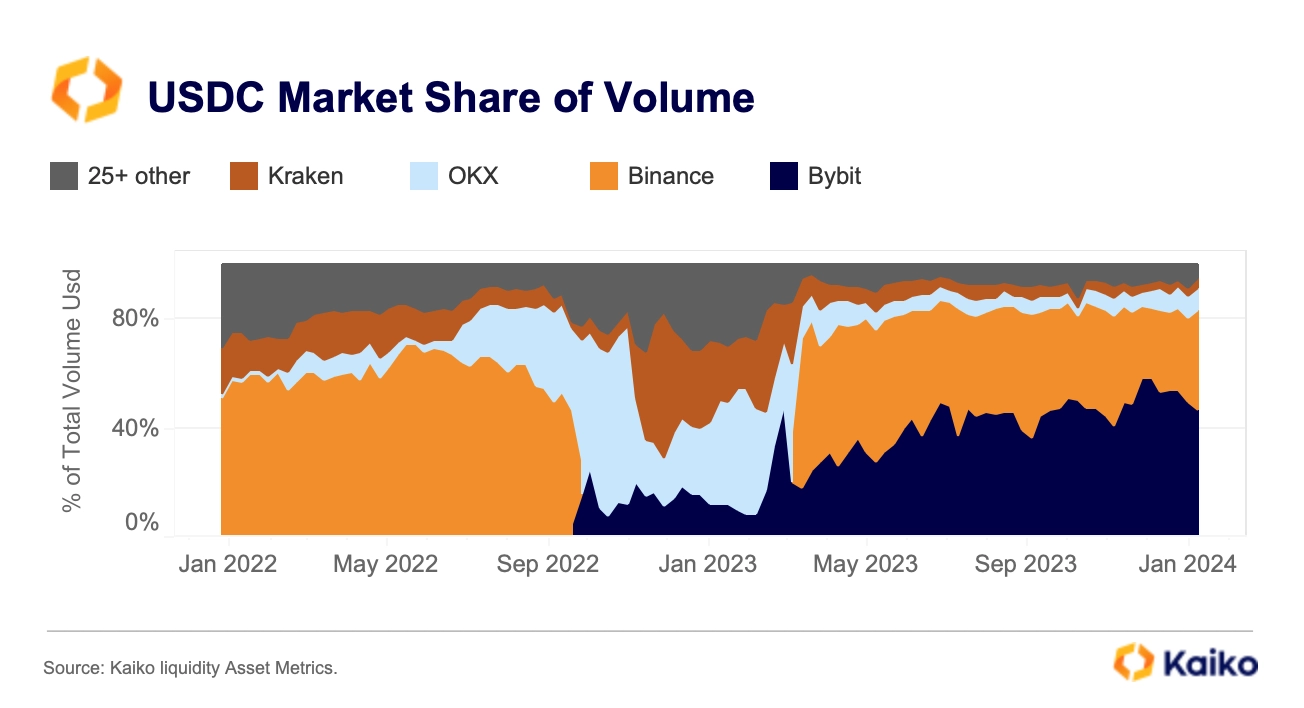
The change in market share comes as the stablecoin wars heat up with new entrants like PYUSD and euro-based stablecoins.
BRC-20 token trade volume surges.
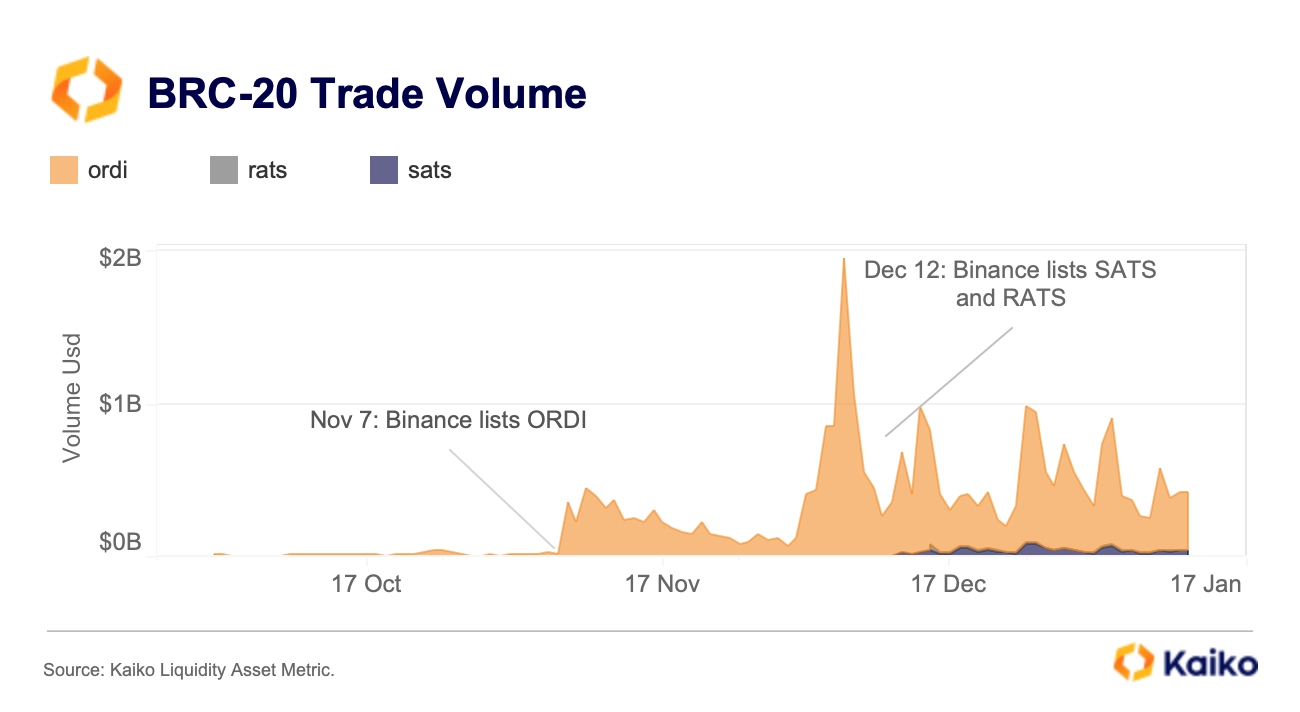
BRC-20 is a new type of crypto token standard on the Bitcoin network, created in March 2023. It leverages the Ordinals protocol, which enables data inscriptions on satoshis, the smallest unit of BTC. Trade volume for this type of token has surged tenfold since November, from just $10-15mn to more than $500mn. The increase came after Binance launched spot and perpetual futures trading for ORDI, SATS and RATS.
Binance’s market share of trade volume initially surged to 63% but has been declining since and currently hovers around 50%. OKX, which was the first exchange to list ORDI back in May, is the second largest spot market for BRC-20 tokens, with a market share of 35%. Rising BRC-20 volumes have boosted demand for block space on the Bitcoin network and pushed transaction costs higher, spurring controversy.
Breaking down an unusual trading trend on Bithumb.
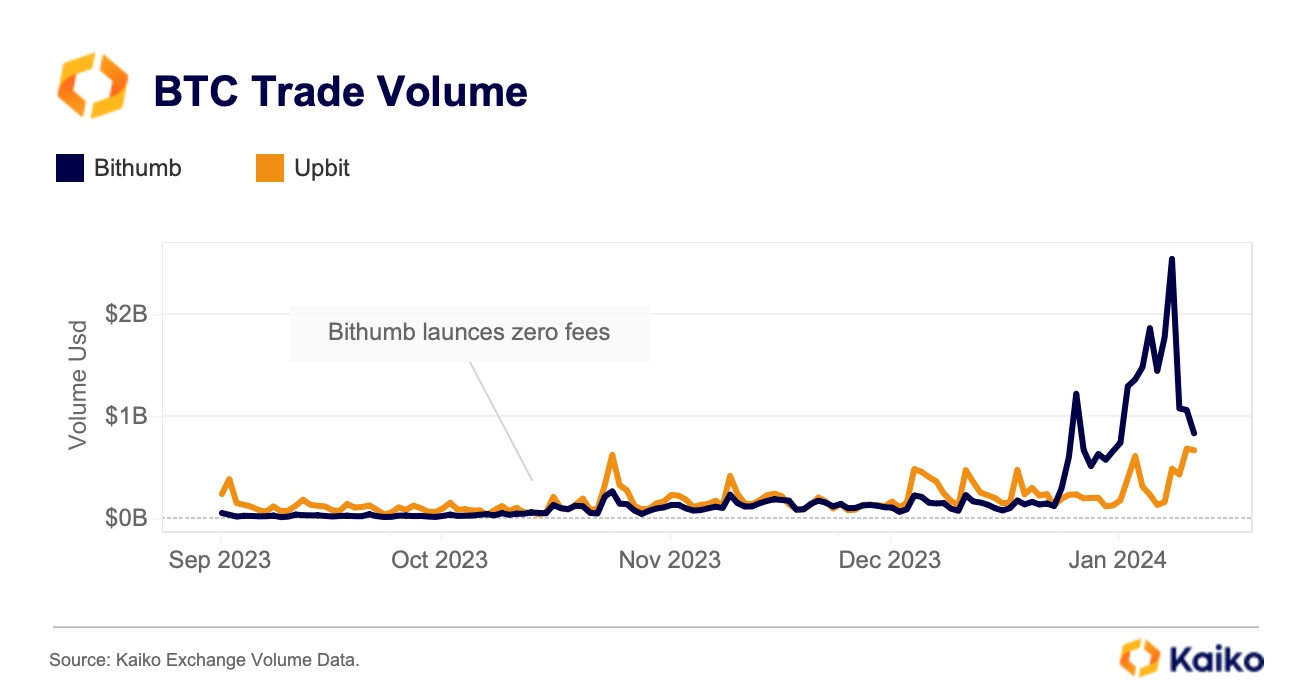
BTC-KRW trade volume on the Korean exchange Bithumb has surged since the end of December, hitting an all-time high on January 8 before retreating last week. This briefly boosted the exchange’s market share among other Korean exchanges to 48%, its highest level since 2021.
BTC was the most traded asset on Bithumb in 2023, representing 70% of its volume, compared to just 11% on Upbit. Bithumb launched zero-fee trading in October, but its trade volume was slow to take off. In early December, it expanded its offering by listing USDT.
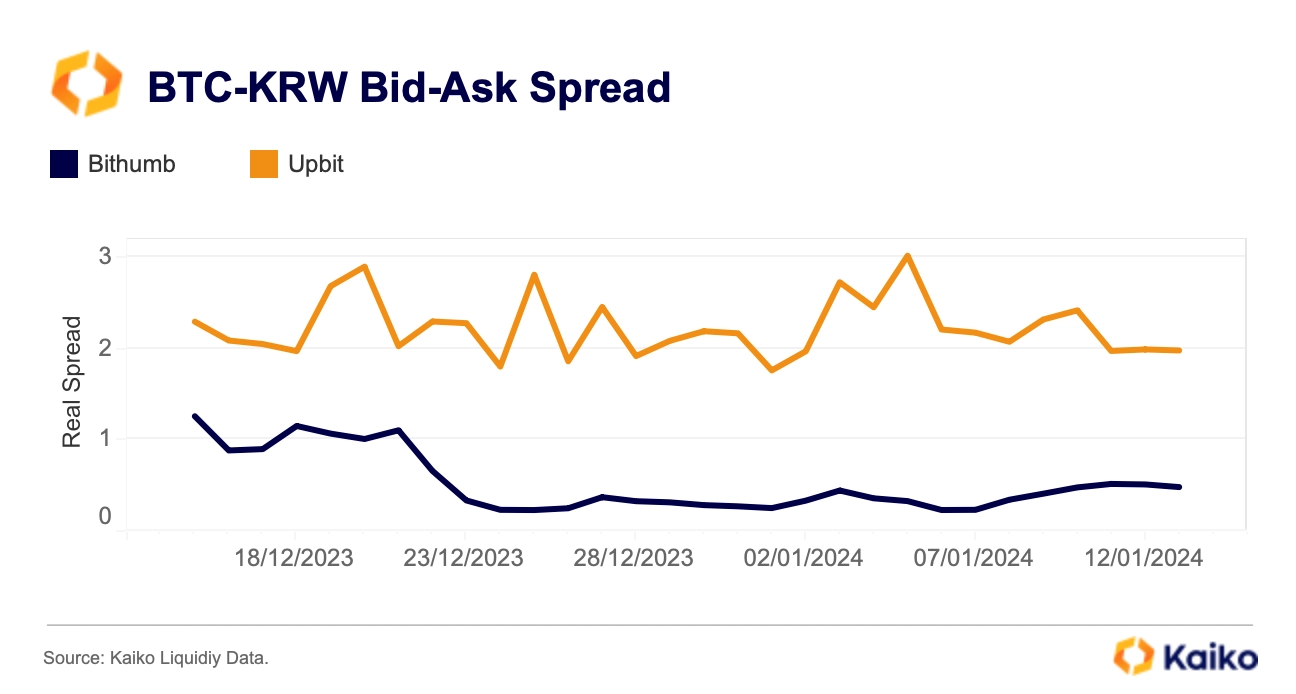
Historically, Bithumb has had tighter bid-ask spreads for BTC-KRW than Upbit. However, the gap has widened significantly since early December.
Spreads on Bithumb have declined from more than 1.4bps to just 0.5bps while they have remained above 2bps on Upbit. Last week, Korea’s financial regulator said brokering U.S. spot BTC ETFs in Korea could be illegal, which could slow Korean BTC demand.


![]()
![]()
![]()
![]()




